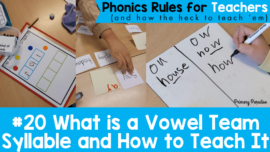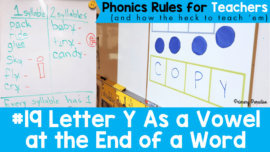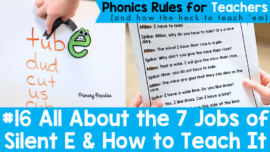Hi everyone! I am so lucky to have one of my dear friends, Lauren from Teacher Mom of Three guest blogging today! She has some awesome stuff to share with you, so I’m going to hand it over to her. 🙂
Happy summer! I am very excited to be guest blogging for Martha today! It is always a pleasure and an honor to spend time here at Primary Paradise! For those that do not know me, I am Lauren from~
My little blog chronicles my passion for literacy, experiences as a reading specialist, life as a mother to three boys, and my adventures as a brand-new homeschooling mom! As with most teachers, summer finds me finally getting a chance to read the stacks of books that have piled up in every nook and cranny of my house. One such book that I have been looking forward to reading is The Book Whisperer by Donalyn Miller. For over a year now, I have seen other bloggers write stellar reviews about this professional book, and it looked like one that would appeal to me. Let me preface the remainder of my post with this: I have only read the first four chapters and this book does not disappoint! In fact, it is even better than I had anticipated!
The premise of the book is that to create passionate, life-long readers, teachers must create a learning environment that fosters and nurtures independent reading. Not the ten or so minutes of D.E.A.R. time we try to squeeze into our literacy block, but rather, to restructure our literacy instruction to intentionally carve out as much time as possible to let kids read. As a side note, if you are a Reader’s Workshop fan or if your teaching has been inspired by the research of Nancie Atwell (In the Middle), you will adore this book!
What I want to share with you today are some of the “nuggets” I have taken away from my reading, thus far. For years, I have been using the research of Atwell, Allington, Wilhelm, Routman, et al, to support my plea for teachers to stop the barrage of worksheets, journal entries, quizzes, tests, and book reports for every.single.book kids read. We don’t need to work kids to death when reading a book. We don’t need to develop a beautiful book or novel unit that is crammed with pages and pages of written work for students to complete. And, with the reading of The Book Whisperer, I have found yet another researcher and classroom teacher who begs us to change our ways, if our goal is to motivate and create life-long readers and not just effective test-takers.
| Graphics: The School Supply Addict. Font by A Cupcake for the Teacher |
- Although this book is geared toward middle-level teachers (the author is a sixth grade ELA and Social Studies teacher), much of what I have read can be adapted for early and intermediate elementary grades.
- Miller explains and details how her students achieve her expectation that they read *40* books a year.
- Miller cites researcher Stephen Krashen who identified fifty-one studies that “…prove that students in free-reading programs perform better than or equal to students in any other type of reading program” (p .3).
- An effective literacy program focuses on engaging students, not writing “pretty” novel units.
- Students’ goal: read for pleasure, not to complete endless activities. Let me clarify: this does not mean that students never respond to their reading, complete vocabulary tasks, or are not held accountable for their reading, comprehension, and learning. Miller delves deeply into this topic later on in the book including preparing students for state tests.
- Implement a workshop approach to reading and writing that works for you and the needs’ of your students. Students should spend the majority of their class time reading and writing independently.
| Graphics: The School Supply Addict. Font by A Cupcake for the Teacher |
- Allow for individual choice with expectations.
- The classroom library is paramount and powerful if we are to guide our students toward developing and internalizing a love for reading. As for me, although I loved having a Smart board in my classroom, I would rather have an extensive classroom library!
- Listen to what students need instead of teachers telling them what they need. Offer students choice in what they read and you have instant buy-in. Miller shares that self-selected books empower and encourage students, it develops self-confidence, and gives control- all in the name of independent learners. Reading choices should not always be dictated by the teacher. Gone are the days of everyone reading the same novel at the same time.
- Choosing notto read isn’t discussed and it is not an option.
- View each student as a reader no matter their reading level.
- Students need to learn how to select books for themselves instead of being a passive learner and relying on the teacher.
| Graphics: The School Supply Addict. Font by A Cupcake for the Teacher |
That is quite a bit to “chew” on, and I haven’t even touched on the main part of chapter two! Throughout the summer, I will continue to share what I have gleaned from reading The Book Whisperer on my blog. The book is available on Amazon. Click the picture below to read more and to possibly purchase.
Thank you, Martha, for allowing me to share with your readers today! I’m anxious to hear from others about their opinions of the book and independent reading ideas for the classroom.

Thanks so much Lauren! Leave her some love below and let her know what you thought! 🙂




